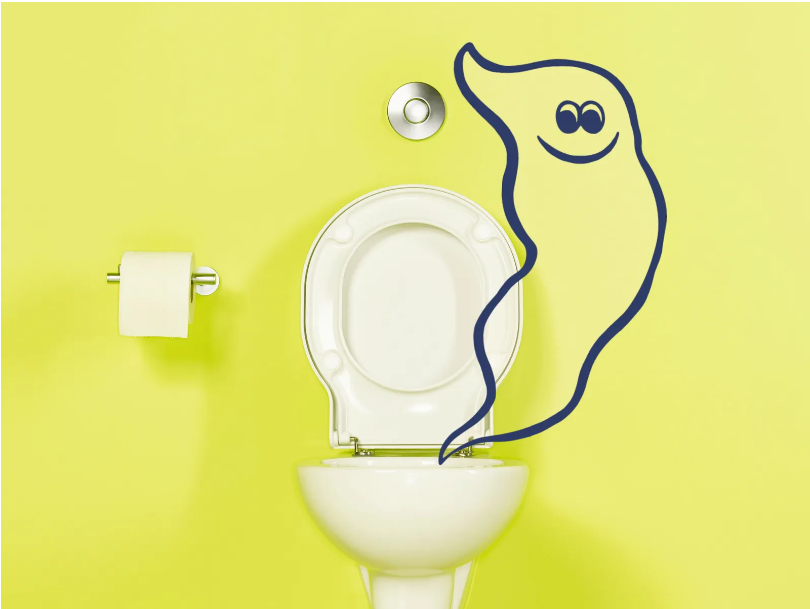If the phrase “ghost poop” leaves you scratching your head, you’re not alone. And no, it’s not some spooky bathroom encounter timed perfectly with the arrival of the lunar Ghost Month. Despite the eerie name, ghost poops are nothing to fear—in fact, they’re a reason to celebrate. Why? Because this elusive bathroom experience is actually a marker of good digestive health.
“Your stool offers important clues about your diet, hydration, and overall gut function,” explains Boston-based dietitian and gut health expert Kate Scarlata, RDN.
So… What Exactly Is a Ghost Poop?
Although not an official medical term, ghost poop usually refers to a bowel movement that either vanishes straight into the toilet bowl without a trace, or one that requires little-to-no wiping afterward. In short: neat, tidy, and gone without a mess.

According to Scarlata, there are a few reasons why this happens.
- They sink, not float. Ghost poops tend to be heavier thanks to a fiber-rich diet, whereas floating stools are often linked to excess gas or malabsorption of carbs and fats.
- They’re well-formed. Hydrated but not watery, firm but not hard—ghost poops strike that “just right” balance in consistency.
Gastroenterologist Dr. Austin L. Chiang adds that the seamless “one-and-done” exit also signals strong coordination between your intestinal muscles and anal sphincter—basically, your body is working like a finely tuned machine.
Another perk? No residue left behind. That indicates your poop has an optimal mix of water and fat, unlike loose, mushy stools that cling like mashed potatoes.
Congrats, You’ve Unlocked a Ghost Poop
“Ghost poops are generally a sign of a healthy gut,” says Scarlata. Still, don’t stress if yours don’t appear often—or at all. Stool consistency varies day by day, influenced by what you eat, how much water you drink, stress levels, and even the diversity of your gut microbiome.
And here’s a sobering stat: fewer than 8% of Americans actually hit the recommended daily fiber intake, according to a 2021 Advances in Nutrition study. That means the majority are missing out on the very nutrient that sets you up for ghost-poop glory.
For most adults, the sweet spot is 25–35 grams of fiber daily, paired with plenty of water. Chiang suggests aiming for urine the color of pale straw as a hydration checkpoint. Too much fiber without enough water? You’ll end up constipated. Too much water without fiber? Runny stools. Balance is key.

A Posture Hack for Smoother Poops
Here’s another pro tip: your toilet posture matters. “Elevating your knees above your hips—by using a squatty stool or even a stack of books—can help straighten the rectum and make pooping easier,” says Chiang.
That said, a lack of ghost poops isn’t a red flag. But if you notice blood in your stool, sudden changes in bowel habits, pain, or unexplained weight loss, it’s time to see your doctor. Some of these symptoms could point to colon cancer, which is rising among younger adults.
Bottom Line
If you’re one of the lucky few who regularly experiences ghost poops, give yourself a round of applause. Your gut is running like a dream. And if not? Don’t panic. Focus on a balanced diet, adequate hydration, and tune in to your body’s signals. After all, the bathroom might be one of the most underrated windows into your health.
“Your poop is talking to you,” says Scarlata. “You just have to pay attention.”

































